1.SINTRA
Towns and Villages
A beautiful town at the foot of the mountain range of the same name, its unique characteristics have led UNESCO to classify it as a World heritage site. It was even necessary to create a special category for the purpose – that of “cultural landscape” – taking into account its natural riches as well as the historic buildings in the town and mountains. Endowed with luxuriant vegetation, the mountains are part of the Sintra-Cascais Natural Park.
From early times Sintra has been the place of choice for the settlement of various peoples who have passed through the Iberian Peninsula and left traces of their presence, which are now displayed in the Archaeological Museum of Odrinhas, in the outskirts of the town.
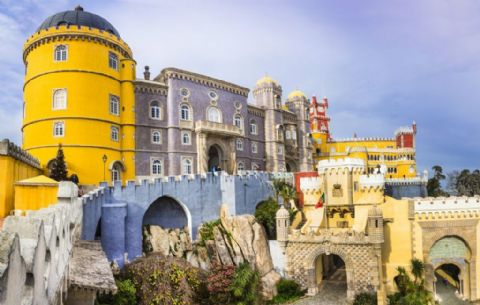
PENA PALACE
Pena National Palace
The fantastic Palácio da Pena is one of the best examples of 19th-century Romantic revivalism in Portugal.
Situated at the top of the Monte da Pena, the palace was built on the site of an old monastery belonging to the Order of St. Jerome. It was the fruit of the imagination of Dom Fernando of Saxe Coburg-Gotha, who married the queen Dona Maria II in 1836. After falling in love with Sintra, he decided to buy the convent and the surrounding land to build a summer palace for the royal family
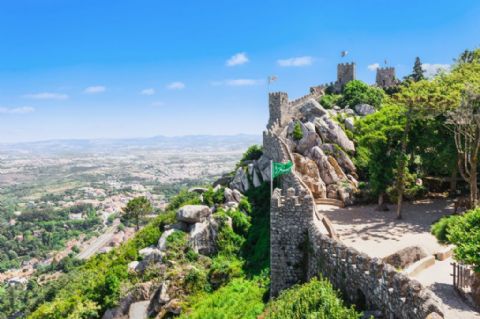
MOORISH CASTLE
Monuments
Winding over two ridges of the Serra de Sintra, the Moorish Castle dates back to the early days of the Moorish occupation of the Peninsula – the 8th Century.
After various attempts it was definitively taken by Dom Afonso Henriques in 1147, and there was built the first Christian Chapel of the borough, dedicated to São Pedro de Penaferrim.
In the romantic period, about 1860, the walls were restored under the supervision of Dom Fernando II, husband of Dona Maria II, who afforested the surrounding areas, and gave the old medieval ruins a new dignity. Of note are the Moorish Cistern in the interior, and the so-called Royal Tower.
Located about 3.5 km from the historical centre of Sintra
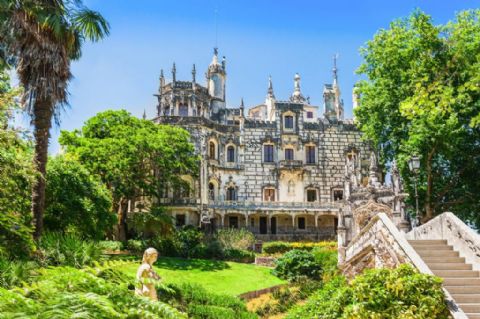
QUINTA DA REGALEIRA
Very close to the historic centre of Sintra is Quinta Regaleira, one of the town’s most enigmatic sights.
The palace of Quinta da Regaleira was built in the early 20th century by the millionaire António Augusto Carvalho Monteiro (1848-1920), who managed to realise one of his dreams here with the help of the scenographic architect Luigi Manini (1848-1936). Surrounded by lush green vegetation, the Palácio da Regaleira is a fascinating discovery
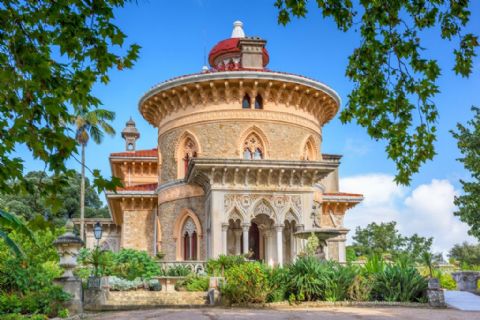
MONSERRATE PALACE
This fantastic Romantic park was created by William Beckford, who fell in love with the Serra de Sintra.
Francis Cook, the first Viscount of Monserrate, who, together with the landscape painter William Stockdale, the botanist William Nevill and the master gardener James Burt, created the contrasting scenarios that are to be found in the park, where narrow winding footpaths intertwine amongst ruins, nooks and crannies, waterfalls and lakes, in what, at first sight, seems to be an apparently disordered fashion.
Spontaneously growing species from Portugal (arbutus-trees, holly trees, cork oak-trees, amongst others) combine with others originating from all of the world’s five continents, inviting visitors to enjoy a stroll through plant varieties of the whole world, ranging from such countries as Australia to Mexico and Japan. Altogether, there are more than 2500 species.
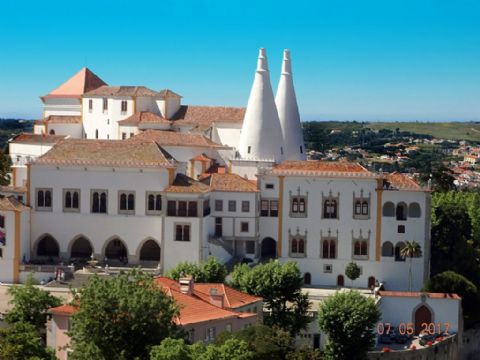
SINTRA PALACE
Sintra National Palace
The Sintra national palace is unique amongst the royal mediaeval palaces in Portugal and the town’s most distinctive building.
Beginning with the nation’s first dynasties, Sintra was one of the preferred places of Portuguese kings and queens, although the palace that we can see nowadays owes its existence to an initiative of Dom João I, who rebuilt it, and Dom Manuel I, who enriched the building’s decorative character and added a new wing.
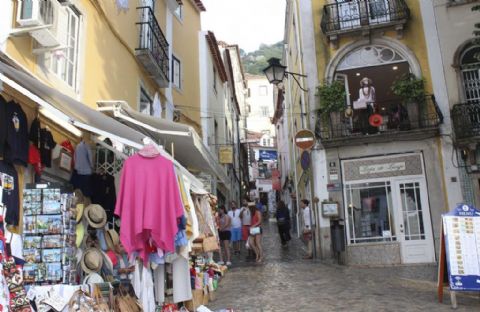
HISTORIC CITY CENTER
A beautiful town at the foot of the mountain range of the same name, its unique characteristics have led UNESCO to classify it as a World heritage site. It was even necessary to create a special category for the purpose – that of “cultural landscape” – taking into account its natural riches as well as the historic buildings in the town and mountains. Endowed with luxuriant vegetation, the mountains are part of the Sintra-Cascais Natural Park.
From early times Sintra has been the place of choice for the settlement of various peoples who have passed through the Iberian Peninsula and left traces of their presence, which are now displayed in the Archaeological Museum of Odrinhas, in the outskirts of the town.
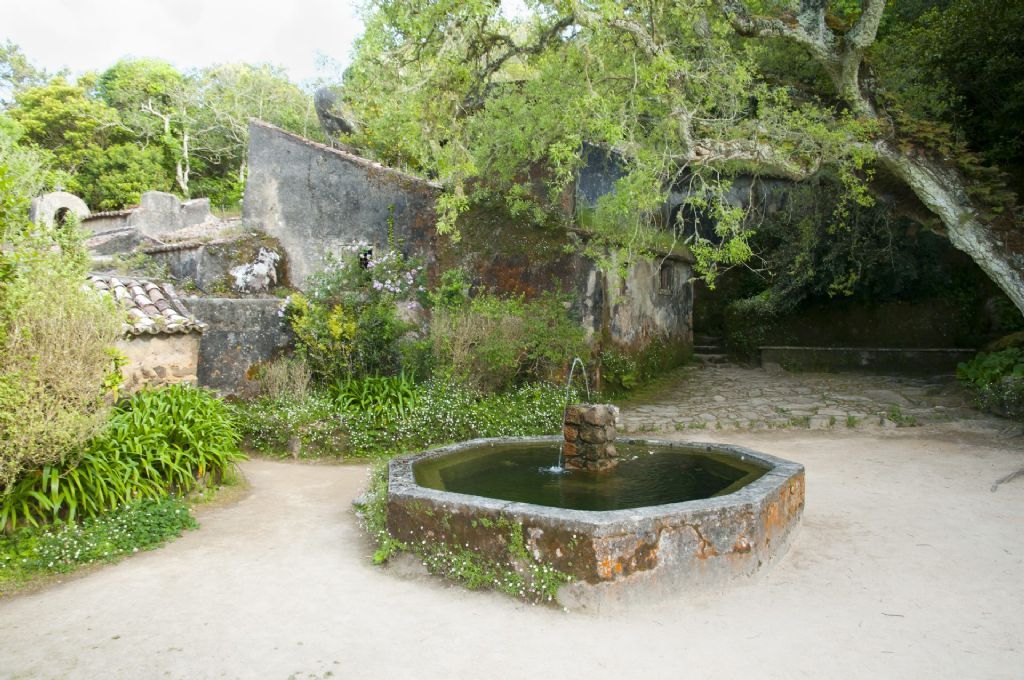
CAPUCHIN CONVENT
Capuchos Convent, also known as Santa Cruz or the Cork Convent, was built in 1560 by Dom Álvaro de Castro, in fulfilment of a vow by his father, Dom João de Castro, who was Viceroy of India.
Its tiny cells, little chapel, refectory and other dependencies, installed in the rock and lined with cork, are a telling example of the humble and austere existence of the Franciscan friars who lived here.
Situated on the Serra de Sintra, 9 km from the centre of Sintra.
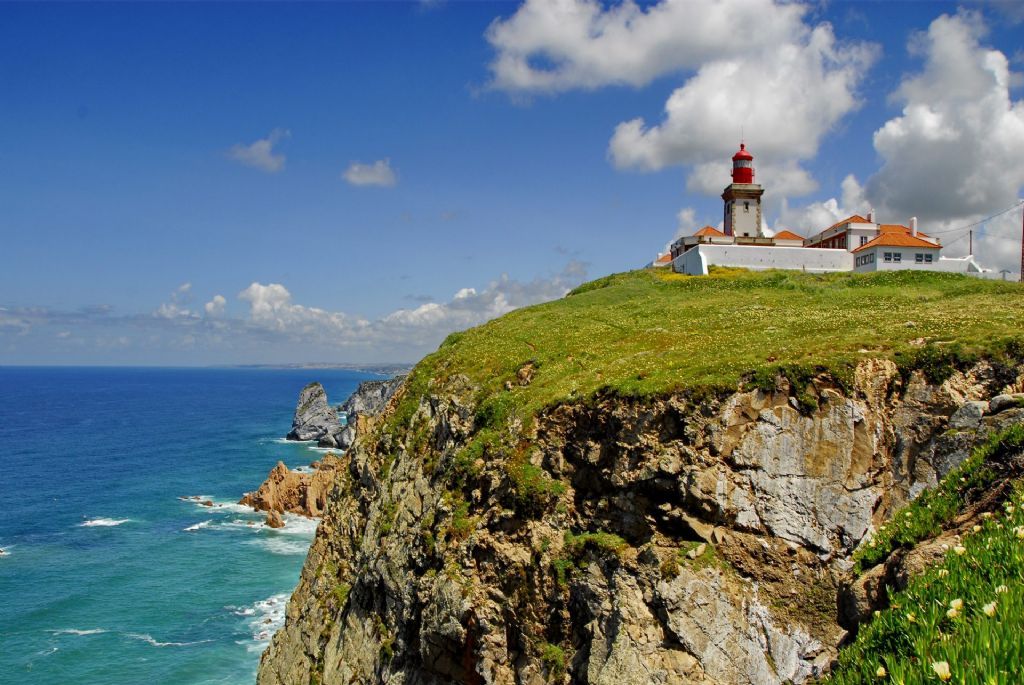
CABO DA ROCA
Located at latitude 38º 47´north and longitude 9º 30´west, Cabo da Roca is an important coordinate for those sailing along the coast, as it is the most westerly point of mainland Europe, a fact borne out by the certificates that visitors take away as a souvenir.
Around 150 metres above the sea, here you can have a panoramic view over the Serra de Sintra and the coast, which makes it worth the visit.
Historical records indicate that there was a fort on Cabo da Roca in the 17th century that played an important part in guarding the entrance to Lisbon’s harbour, forming a defensive line along the coast, especially during the Peninsular Wars. Today there are only traces, as well as the lighthouse which is still an important point for navigation.